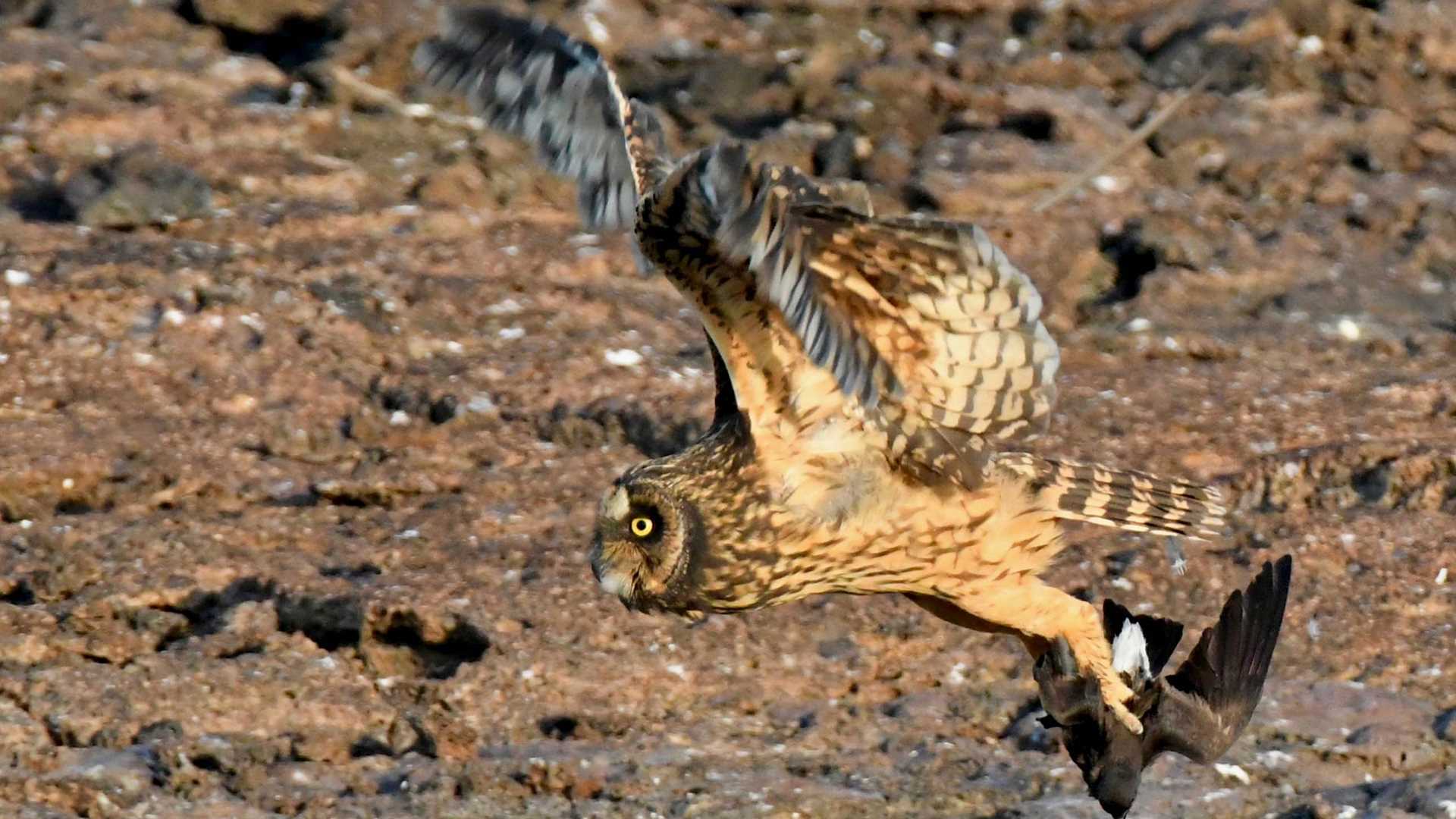This morning we are at the crater of a very old volcano called Tower, or Genovesa. This island is isolated from the rest of the big islands forming the Galapagos. Last night we motored seven hours to get here and we jumped across the Equatorial line for the first time. This place is famously known as the island of the birds. Thousands of red-footed boobies inhabit this area. One may also find frigates, sea gulls, petrels, and the very mysterious short-eared owl, which has become diurnal. This is a unique behavior and is due to the lack of the major predator of the Galapagos: the hawk.
One interesting fact of Genovesa is the absence of terrestrial mammals, giant tortoises, lava lizards, land iguanas that are usually found in the rest of the archipelago. After breakfast, we disembarked to visit a tiny beach at the foot of a very long cliff that surrounds the crater. As soon as we landed, we could see so many sea birds! Everywhere you looked, you could observe these animals doing their daily tasks to survive. This area seemed almost unreal to some of our guests. In the sky, frigates fought against red-footed boobies to take their food. They chased them and even grabbed their tails to try and make them regurgitate their food. This aggressive frigate behavior is known as kleptoparasitism. At the end of our short trail we explored a saline water stream that brings baby sting rays to a big pool as well as some lava gulls that benefit from the cool water to thermoregulate.
After the walk we went back to our ship to suit up and snorkel along the cliff. The water was a bit murky, but not an obstacle, as we were still able to enjoy the wonders of the Galapagos marine wildlife. We saw many kinds of tropical fish, yellow-tail mullets, and some of our lucky guests spotted a few hammerhead sharks.
In the afternoon, we explored the other side of the wall. Prince Phillip’ Steps is a great place to spot owls. We were very lucky to see a few of them so close to the trail hunting storm petrels. Owls are very agile birds and can catch their prey in the air. Photographers were very happy capturing that moment! As soon as dusk arrived, the golden light decorated the immense lava field while the sky was invaded by sea birds flying on thermal currents. We had a spectacular ending this week. Our guests had a lot of fun and enjoyed seven days of Galapagos exploration, wildlife, contact with pure nature, and pristine environments at sea and on land. The same land that astonished Charles Darwin 200 years ago!
We are finishing another spectacular day full of new discoveries, emotions, explorations, and adventure. Tomorrow we’ll have to go back to the real world, but the Galapagos will stay in the memories of our intrepid guests for the rest of their lives.







